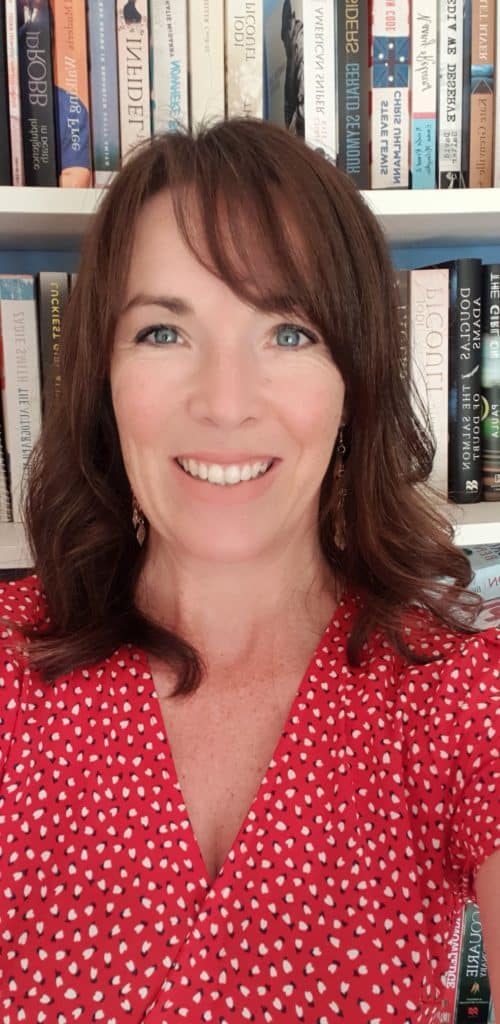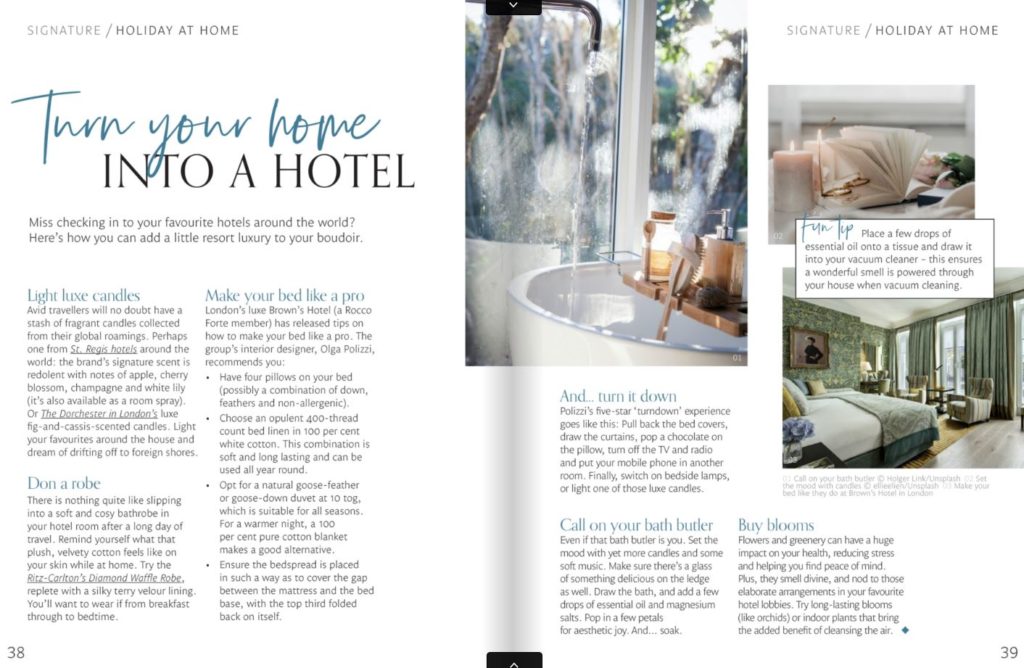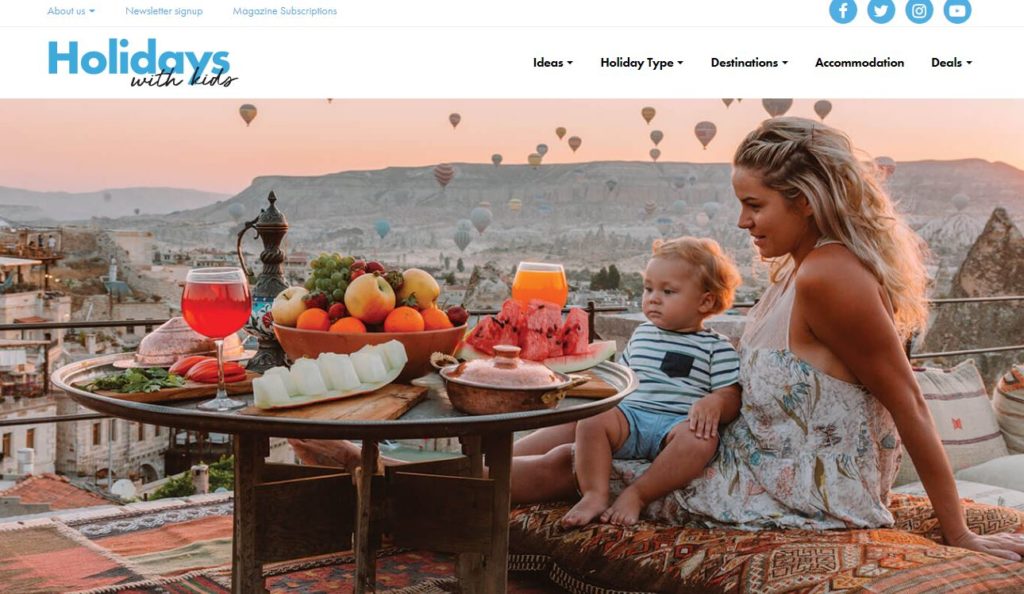Alsion Godfrey is a publishing unicorn. She’s done everything – from media sales to business, entertainment travel and hard news journalism. In November 2020, a year that saw the travel industry decimated by COVID-19, Godfrey chose to make the leap from mainstream media into boutique travel publishing by accepting a role with Signature Media.
I caught up to chat about why Alison Godfrey made the leap, the mainstream media habits that she’s bringing to travel publisher Signature Media to grow its digital presence, and the advantage targeted media brands have over mainstream media when it comes to content strategies and advertisers.

Let’s set the scene and appreciate Alison Godfrey’s career for a second…
Godfrey’s career in publishing and media is what dreams are made of. She began her career in television media sales, analysing the advertising spend of corporates and pitching improvements to their marketing strategy, before returning to university to study journalism.
In her first university class, a News Ltd scout selected Godfrey for an internship at The Daily Telegraph, which led to roles at Channel 9 and The Courier before she travelled to London and found herself working at Associated Newspapers in her first digital role. When Godfrey returned from Europe, she landed a role at news.com.au
“It was the really early days of digital media. We were still having to look at things in code. It was absolutely fascinating,” Godfrey says.
After six years at news.com.au, AAP was keen for Godfrey to come across as an entertainment editor, where she managed a team of 10 across Australia and LA. She then landed the gig to start AAP’s commercial content section.
“We created bespoke commercial content, mainly for Fairfax, but also for clients like the Gold Coast before the Commonwealth Games, who booked in for videos, photos and stories that could be packaged together to be sent to the media.”
Being largely commercial work, Godfrey says “It gave me some amazing skills. It involved starting up the entire section as a standalone business at AAP. I worked with the sales team, from the very brief all the way through to the finished product, getting it passed through all the Fairfax editors, which could be a challenge. That business ended up doing really well and turning a profit for AAP.”
But Godfrey missed working in digital publishing, so after six years at AAP she went to work for a niche travel publisher. On leaving, Godfrey’s AAP boss warned her to be careful of working for smaller media players, “they’re not safe, they might fold and you can always come back” were his parting words.
“You know, he was right,” Godfrey says. “This niche player, in particular, wasn’t doing things strategically and did fold. But in the time that it was running, the digital section was really good. So when that folded I went back to mainstream media with my tail between my legs.”
So how did Signature Media convince Godfrey to return to travel publishing during COVID-19?
Cathy and Cara Wagstaff from Signature Media instantly started courting Godfrey to work with them after her first foray into niche publishing didn’t work out. But in February 2020 Godfrey took a role at Seven News instead.
“I told Seven that I just wanted to be a journalist, I didn’t want to be the homepage editor. I wanted to calm things down a bit. And then COVID-19 hit. I ended up being the online news editor. Every day was COVID-19 news after COVID-19 news. It was all the audience wanted to read, and it was long, long hours.
“My husband works for a company that makes life support ventilators. I was a news editor. I wasn’t allowed to work from home. We have two children who had to be homeschooled. It was completely untenable.”
Godfrey says “We were slowly going insane. We sat down as a family and said something’s got to give.”

“Cathy and Cara had kept in contact all year. They took me out to lunch and offered me a job. I rejected them three times, I think,” Godfrey says. “And then, eventually, at the end of October, I said I actually am interested.
“The courting process was partly for me. Really getting to know them, checking them out and making sure they knew their stuff.
“Particularly during COVID-19, it’s a massive risk to go into a travel publisher in the middle of COVID-19. So I wanted to be 100 per cent sure that this business and these people knew what they were doing.
“And they have managed to not just survive COVID, but thrive through it. That’s really impressive.”
How travel publisher Signature Media thrived during COVID-19
As with most travel publishers, Signature Media needed to rethink its strategy during the COVID-19 pandemic. The team thought about what their readers needed at that point in time and asked their advertisers what would be of most value to them.
They paused their print titles and doubled down on their digital strategy. Two regular digital publications were born, plus a custom publishing arm:
- Family Matters spoke to families at home, providing content that based on what they were doing, what their intent was at that moment. Article topics incorporated gardening, and ‘the best houseplants for your home’, and advertisers outside of the travel sector were brought onboard.
- Signature@Home repurposed and repositioned Signature’s existing print title Signature Luxury Travel and Style to be home-related content, including articles like ‘the best scents for your home to make it smell like a luxury holiday’.
- Custom publishing: individual e-books were created for the advertisers of their paused print publications that wanted to remain top of mind when the pandemic broke.

Godfrey says that what impressed her most was Signature Media’s awareness of the strategic gaps that they needed to fill.
“At the time, they didn’t have a dedicated digital editor and given that they were pushing further into that region, they knew they needed someone with more expertise in digital, that could really create a strategy around it.”
Godfrey says that the custom e-books are doing really well: “We are finding that, on digital, people are still planning and dreaming. So that type of content has worked really well. We’ve now settled into a schedule, I think of about one ebook every month.
“Having that creativity to just roll with it, I think is what Signature has done really well.”

The difference between writing for print and digital
Godfrey has a good track record of adapting print content for digital.
While at news.com.au, she was seconded to the travel section because it wasn’t doing very well. News Corp had a lot of print travel content that they were uploading online to save time and money. Godfrey’s remit was to fix it and make it rate.
“Me and another girl, Kate, made news.com.au’s travel section the number one travel section in the country, making sure that the advertisers were getting what they want, but the readers got what they wanted too. The travel section actually turned a profit that year.”
Godfrey explains that targeted media brands need to understand that writing for print and digital is very different.

Readers engaging with print have a different mindset than when they engage with digital. It’s a different experience – intentional, slow, which means that writing for print can be more creative. Whereas writing for digital should be more like broadcast – shorter sentences, written like you’re speaking.
“If you write digital articles like print, you’ll find, you’ll hit every single red mark on your SEO and readability. It won’t work. The sentences are too long, they’re too flowy. And it often doesn’t meet the reader intent.”
“In print, you can assume people are going to read everything in it, they’ll drool over the pictures. It’s not like that online where they come to a piece of content and really want the detail. They often think about the term that they’ve searched for to get there. What do they expect when they search for that term? Are we answering their questions? Or are they going to have to go somewhere else to find the answers?”
The beauty of digital is that it isn’t a secret science.
“I love digital because it’s all about the numbers, you can see everything about a story, about reader intent, you can see what works and what doesn’t work instantly. You don’t see that as much on print.”
Signature Media’s digital strategy
Godfrey explains the SEO, readability and reader intent are her three core pillars when considering digital content.
“Each one has to be hit for a story to go up online at Signature. That doesn’t matter whether it’s editorial or whether that’s sponsored content. We will go back to clients and tell them if we think it isn’t going to work.”
“We now produce two versions of every print story that we have said will go online. To go online, it needs extra elements added. It needs a sticky headline that’s going to draw readers in. It needs an excerpt or stand-first that really shines.
Godfrey explains this isn’t as important for print because readers look at the whole article. With digital, readers look at the headline, image and one paragraph to decide if they’re going to click through.
“You’ve got to sell it to them. It’s got to be click worthy, not clickbait. Tell me why I need to read this. And then you also need to think about re-circulation. Where do they go after they’ve read that story? I want them to be clicking on more than one page on my website, so I need some tricks to keep them there.”

Watching the numbers
Constantly watching digital analytics has been drilled into Godfrey thanks to her background in mainstream media.
“My analytic screen was always open. I knew the numbers I should be hitting. In a mainstream media outlet, they’re displayed on TV screens all throughout the office. At news.com.au we had an overlay over the website so you could see how many readers were on each story as you were editing.”
“I knew what each number should be for each position on the website. And if an article was underperforming, I’d look at how to tweak it. If it was over-performing, I might pull it up higher to make it perform even more.
“I think that’s one habit that mainstream media can lend to niche publishers to make them even better at what they do – constantly look at your analytics and set goals.”
Posting with purpose
Godfrey believes that targeted media brands have an advantage over mainstream media because of the structure of their editorial teams and the audience being reached.
“In mainstream, each person has a very segmented role. So it can get a little bit more robotic, and there’s not as much room for creativity.”
A reporter writes the story, suggests a headline, includes images; a sub-editor and/or editor will review; then a front page editor assesses the headline and images; determines where the story should be placed on the homepage.
“Whereas when you work for a targeted media publication, you can do the entire process all the way through. Even on the advertising side of things, you can work across the whole suite of the business, which I think makes it a much stronger editorial team because they understand the purpose [of each piece of content].
“They understand the whole picture of this story and why it’s important.”
Godfrey says that this, in turn, makes it easier to develop and follow through on strategies to inform each piece of content that’s produced, whether that’s increased web traffic, extra e-newsletter sign-ups or increased advertising revenue.
Understanding audience needs
Developing these strategies for digital content involves understanding what your audience wants.
“While mainstream media often has a bigger audience, that audience is often not as engaged…They click on to get their news fixed, and then they click off, whereas, people will deliberately come to a niche publisher because they’re interested and they want to read it.”
“I have to provide [Signature Media’s audience] with a lot more detail than I would on a mainstream media publication because they expect that of us, they trust us, they know they’re going to get all the information they need from us.
“It’s about adding in the detail that we know they love. But that’s also something that Signature does that a lot of other publications don’t do and that’s really been a big part of our strategy this year,” Godfrey says.
“If I was doing a mainstream travel story, I could get away with doing a lot less, and I’d still get the clicks, but it wouldn’t be worth as much.
“Mainstream has a higher percentage of trolls. We’d often do stories just because we knew it would be divisive because it would get higher clicks. Targeted media doesn’t have that, it’s a lot more positive. It’s a lot more informative and nicer – not trying to divide people, not trying to hype them up.
“Targeted media has a, I’d say, a bigger percentage of loyal engaged readers – your readers who are more likely to buy, who are more likely to interact – they’re the most valuable readers.
Godfrey says that this is something advertisers and PRs need to think about more.
“I think the audience makes a massive difference…you may get a big audience on a mainstream story, but it’s the type of audience that really matters. When you get an engaged audience, they will remember you a lot more than that fleeting moment they saw you on mainstream media.”
Advertisers need to realise that they can work more closely with targeted media companies compared to mainstream too.
“We know our audiences so well. We know who they are, we know what they like, and when it comes to native content pieces, we can craft things that really hit that audience in the right spot, which is not as easy on mainstream media.”
Ready for a long career in travel publishing
Out of all the roles that Godfrey has held over her career, where does she feel most at home?
“Travel, surprisingly, is where I like to be the most,” she says.
“One of the reasons why I jumped into targeted media was I love the ability to work through the whole process and to make it all come together into a strategy. Each individual piece of content plays a role in a business strategy.
“That’s what you get working in targeted media, you get to see the entire thing. From the very ideation through to the results. You don’t get that in mainstream media.”







